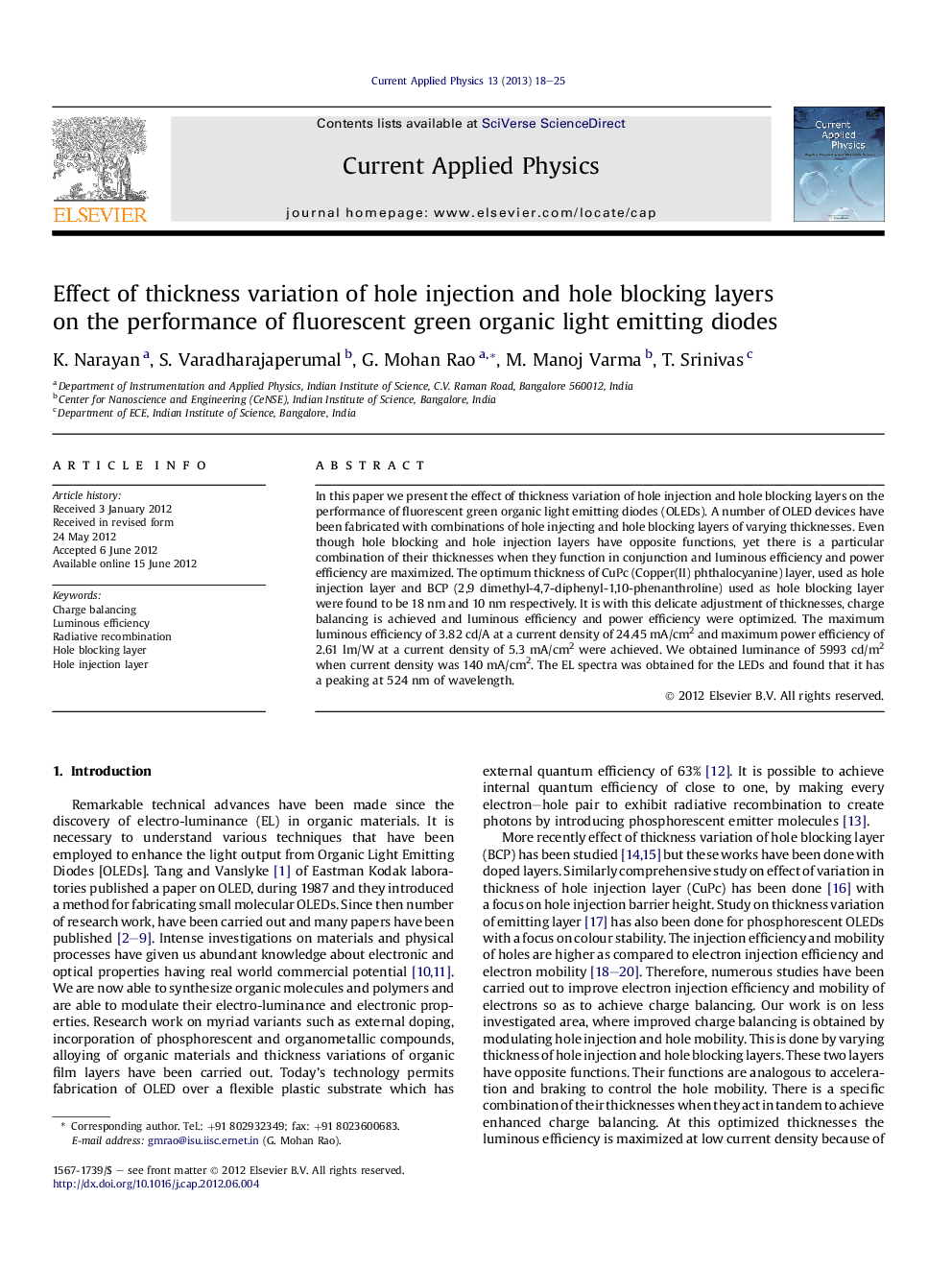| Article ID | Journal | Published Year | Pages | File Type |
|---|---|---|---|---|
| 1786115 | Current Applied Physics | 2013 | 8 Pages |
In this paper we present the effect of thickness variation of hole injection and hole blocking layers on the performance of fluorescent green organic light emitting diodes (OLEDs). A number of OLED devices have been fabricated with combinations of hole injecting and hole blocking layers of varying thicknesses. Even though hole blocking and hole injection layers have opposite functions, yet there is a particular combination of their thicknesses when they function in conjunction and luminous efficiency and power efficiency are maximized. The optimum thickness of CuPc (Copper(II) phthalocyanine) layer, used as hole injection layer and BCP (2,9 dimethyl-4,7-diphenyl-1,10-phenanthroline) used as hole blocking layer were found to be 18 nm and 10 nm respectively. It is with this delicate adjustment of thicknesses, charge balancing is achieved and luminous efficiency and power efficiency were optimized. The maximum luminous efficiency of 3.82 cd/A at a current density of 24.45 mA/cm2 and maximum power efficiency of 2.61 lm/W at a current density of 5.3 mA/cm2 were achieved. We obtained luminance of 5993 cd/m2 when current density was 140 mA/cm2. The EL spectra was obtained for the LEDs and found that it has a peaking at 524 nm of wavelength.
► We have studied the effects of thickness variation of BCP and CuPc layers. ► These two layers have opposite functions in an OLED. ► At an optimized value of their thicknesses these two layers work in conjunction. ► Charge balancing is achieved. ► Luminance efficiency and power efficiency of the device are maximized.
